Functions
abs
Return the absolute value.
1real a = abs(b);
Parameters:
b(int,real,complex,fespacefunction,real[int]orreal[int, int])
Output:
a(int,real,real[int]orreal[int, int])
acos
\(\arccos\) function.
1real theta = acos(x);
Parameter:
x(real,real[int]orreal[int, int])
Output:
theta(real,real[int]orreal[int, int])

acosh
1real theta = acosh(x);
Parameter:
x(real)
Output:
theta(real)
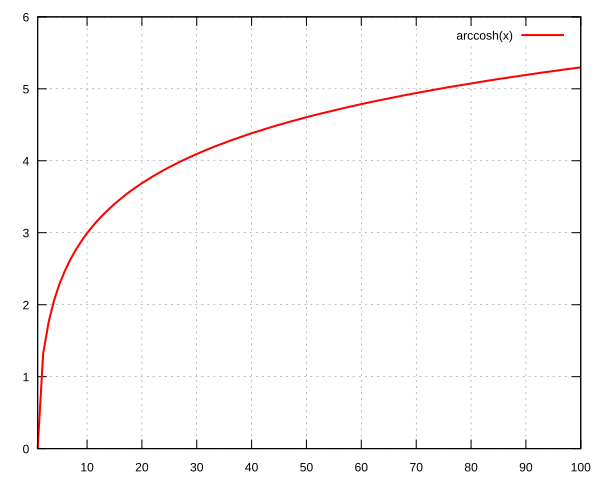
adaptmesh
Mesh adaptation function.
1mesh Thnew = adaptmesh(Th, [fx, fy], hmin=HMin, hmax=HMax, err=Err, errg=ErrG, nbvx=NbVx, nbsmooth=NbSmooth, nbjacoby=NbJacoby, ratio=Ratio, omega=Omega, iso=Iso, abserror=AbsError, cutoff=CutOff, verbosity=Verbosity, inquire=Inquire, splitpbedge=SplitPbEdge, maxsubdiv=MaxSubdiv, rescaling=Rescaling, keepbackvertices=KeepBackVertices, IsMetric=isMetric, power=Power, thetamax=ThetaMax, splitin2=SplitIn2, metric=Metric, nomeshgeneration=NoMeshGeneration, periodic=Periodic);
Parameters:
Th(mesh) Mesh to refine[fx, fy](funcorfespacefunction), scalar or vectorial Function to follow for the mesh adaptationhmin=(real) Minimum edge sizehmax=(real) Maximum edge sizeerr=(real) Error level (P1 interpolation)errg=(real) Relative geometrical errornbvx=(int) Maximum number of verticesnbsmooth=(int) Number of smoothing iterationsnbjacoby=(int) Number of iterations for the smoothing procedureratio=(real) Ratio of the trianglesomega=(real) Relaxation parameter for the smoothing procedureiso=(bool) Isotropic adaptation (if true)abserror=(bool) Error (if true) - Relative error (if false)cutoff=(real) Lower limit of the relative error evaluationverbosity=(real) Verbosity levelinquire=(bool) If true, inquire graphicallysplitpbedge=(bool) If true, split all internal edges in halfmaxsubdiv=(int) Bound the maximum subdivisionsrescaling=(bool) Rescale the function in [0, 1]keepbackvertices=(bool) If true, try to keep vertices of the original meshIsMetric=(bool) If true, the metric is defined explicitlypower=(int) Exponent of the Hessianthetamax=(int) Minimum corner angle (in degree)splitin2=(bool) Split all triangles into 4 sub-triangles if truemetric=([real[int], real[int], real[int]]) Array of 3 real arrays defining the metricnomeshgeneration=(bool) If true, the mesh is not generatedperiodic=(real[int, int]) Build an adapted periodic mesh
Output:
Thnew(meshormesh3)
adj
Adjacent triangle of the triangle \(k\) by the edge \(e\)
1int T = Th[k].adj(e);
Parameter:
e(int) Edge number
Output:
T(int) Triangle number
AffineCG
Affine conjugate gradient solver
Used to solve a problem like \(Ax=b\)
1int Conv = AffineCG(A, x, precon=Precon, nbiter=NbIter, eps=Eps, veps=VEps, stop=Stop);
Parameters:
A(matrix) Matrix of the problem \(Ax=b\)x(real[int]) Solution vectorprecon=(real[int]) Preconditionning functionnbiter=(int) Maximum number of iterationseps=(real)Convergence criterion
If \(\varepsilon>0\): test \(||A(x)||_p \leq \epsilon||A(x_0)||_p\)
If \(\varepsilon<0\): test \(||A(x)||_p^2 \leq |\epsilon|\)
veps=(real) Same aseps, but return-epsstop=(func) Convergence criterion as a functionPrototype is
func bool StopFunc (int Iter, real[int] U, real[int] g)u: current solution,g: current gradient (not preconditionned)
Output:
Conv (int) 0: converged - !0: not converged
AffineGMRES
Affine GMRES solver
Parameters and output are the same as AffineCG
arg
Return the argument of a complex number.
1real a = arg(c);
Parameters:
c(complex)
Output:
r(real)
asin
\(\arcsin\) function.
1real theta = asin(x);
Parameter:
x(real,real[int]orreal[int, int])
Output:
theta(real,real[int]orreal[int, int])
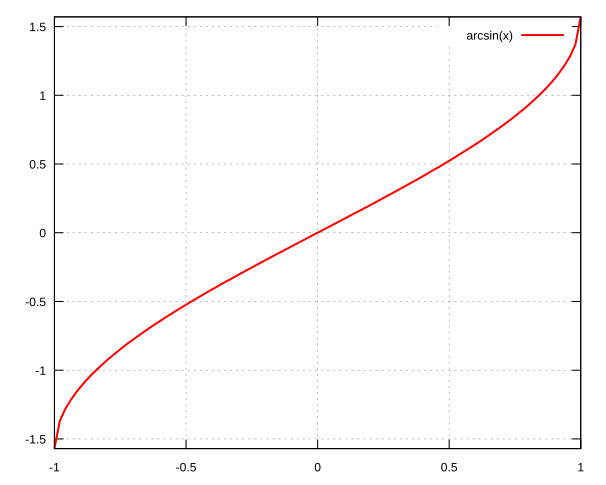
asinh
1real theta = asinh(x);
Parameter:
x(real)
Output:
theta(real)
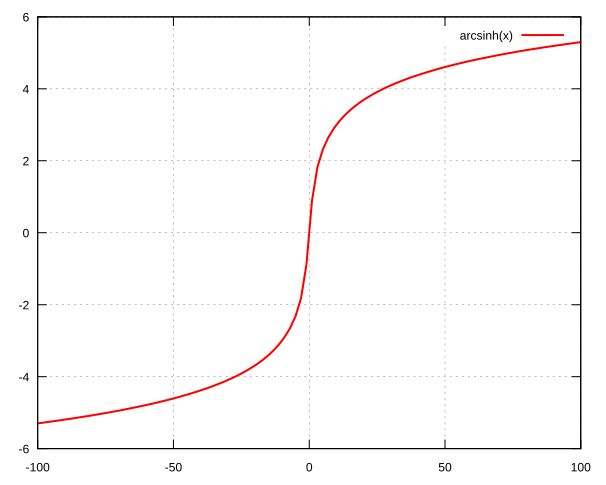
assert
Verify if a condition is true (same as C), if not the program stops.
1assert(x==0)
Parameter:
Boolean condition
Output:
None
atan
\(\arctan\) function.
1real theta = atan(x);
Parameter:
x(real)
Output:
theta(real)
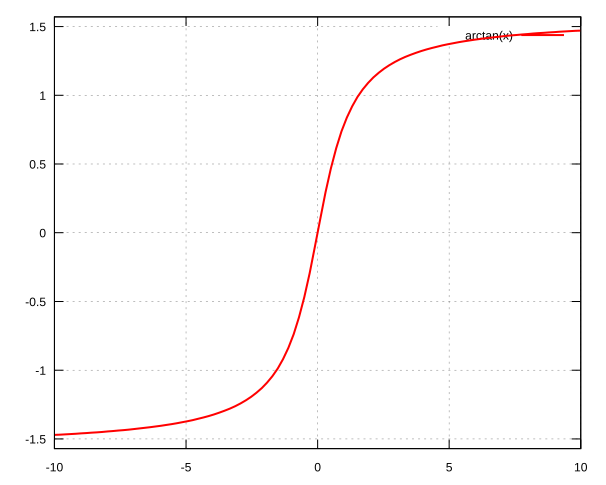
atan2
\(\displaystyle{\arctan\left(\frac{y}{x}\right)}\) function, returning the correct sign for \(\theta\).
1real theta = atan2(y, x)
Parameters:
y(real)x(real)
Output:
theta(real)
atanh
1real theta = atanh(x);
Parameter:
x(real)
Output:
theta(real)

atoi
Convert a string to an interger.
1int a = atoi(s);
Parameter:
s(string)
Output:
a(int)
atof
Convert a string to a real.
1real a = atof(s);
Parameter:
s(string)
Output:
a(real)
BFGS
Todo
todo
buildmesh
Build a 2D mesh using border elements.
1mesh Th = buildmesh(b1(nn) + b2(nn) + b3(nn) + b4(nn),[points=Points], ][nbvx=Nbvx], [fixedborder=FixedBorder]);
Parameters:
b1,b2,b3,b4(border)Geometry border,
b1(nn)meansb1border discretized bynnverticespoints(real[int, int]) [Optional]Specify a set of points
The size of
Pointsarray is(nbp, 2), containing a set ofnbppoints withxandycoordinatesnbvx=(int) [Optional]Maximum number of vertices Default: 9000
fixedborder=(bool) [Optional]If true, mesh generator cannot change the boundary mesh
Default:
false
Output:
Th(mesh) Resulting mesh
ceil
Round fractions up of \(x\).
1int c = ceil(x);
Parameter:
x(real)
Output:
c(int)
change
Change a property of a mesh.
1int[int] L = [0, 1];
2Thnew = change(Th, label=L);
Parameters:
Th(mesh) Original meshlabel=L (int[int]) Pair of old and new labelregion=R (int[int]) Pair of old and new regionflabel=l (func int) Function of int given the new labelfregion=r (func int) Function of int given the new region
Output:
Thnew(mesh) Mesh with changed parameters
checkmovemesh
Check a movemesh without mesh generation.
1real minT = checkmovemesh(Th, [Dx, Dy]);
Parameters:
Same as movemesh
Output:
minT(real) Minimum triangle area
chi
Characteristic function of a mesh.
1int IsInMesh = chi(Th)(x, y);
Parameters:
Th(meshormesh3)x(real) Position \(x\)y(real) Position \(y\)
Output:
IsInMesh(int) 1 if \((x,y)\in\)Th0 if \((x,y)\not\in\)Th
clock
Get the clock in second.
1real t = clock();
Parameter:
None
Output:
t(real) Current CPU time
complexEigenValue
Same as EigenValue for complex problems.
conj
Caculate the conjuguate of a complex number.
1complex C1 = 1 + 1i;
2complex C2 = conj(C1);
Parameter:
C1(complex) Complex number
Output:
C2(complex) Conjuguate of C1
convect
Characteristics Galerkin method.
1real cgm = convect([Ux, Uy], dt, c);
2real cgm = convect([Ux, Uy, Uz], dt, c);
Compute \(c\circ \mathbf{X}\) with \(\mathbf{X}(\mathbf{x}) = \mathbf{x}_{\tau}\) and \(\mathbf{x}_{\tau}\) is the solution of:
Parameters:
ux(fespacefunction) Velocity: \(x\) componentuy(fespacefunction) Velocity: \(y\) componentuz(fespacefunction) 3D onlyVelocity: \(z\) component
dt(real) Time stepc(fespacefunction) Function to convect
Output:
cgm(real) Result
copysign
C++ copysign function.
1real s = copysign(a, b);
cos
\(\cos\) function.
1real x = cos(theta);
Parameters:
theta(realorcomplex)
Output:
x(realorcomplex)
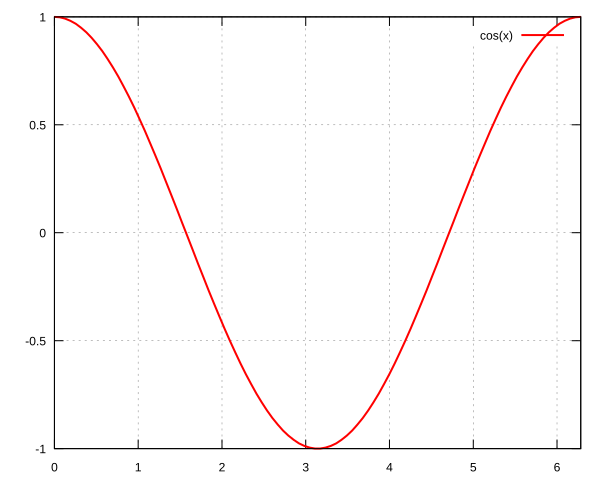
cosh
\(\cosh\) function.
1real x = cosh(theta);
Parameters:
theta(real)
Output:
x(real)
diffnp
Arithmetic useful function.
1diffnp(a, b) = (a<0)&(0<b) ? (b-a) : 0;
diffpos
Arithmetic useful function.
1diffpos(a, b) = max(b-a, 0);
dist
Arithmetic useful function.
1dist(a, b) = sqrt(a^2 + b^2);
2dist(a, b, c) = sqrt(a^2 + b^2 + c^2);
dumptable
Show all types, operators and functions in FreeFEM.
1dumptable(out);
Parameters:
out(ostream)coutofofstreamfile.
Output:
None
dx
\(x\) derivative.
1Uh up = dx(u);
Parameters:
u(fespacefunction)
Output:
up(fespacefunction)
dxx
\(x\) double derivative.
1Uh upp = dxx(u);
Parameters:
u(fespacefunction)
Output:
upp(fespacefunction)
dxy
\(xy\) derivative.
1Uh upp = dxy(u);
Parameters:
u(fespacefunction)
Output:
upp(fespacefunction)
dxz
\(xz\) derivative.
1Uh upp = dxz(u);
Parameters:
u(fespacefunction)
Output:
upp(fespacefunction)
dy
\(y\) derivative.
1Uh up = dy(u);
Parameters:
u(fespacefunction)
Output:
upp(fespacefunction)
dyx
\(yx\) derivative.
1Uh upp = dyx(u);
Parameters:
u(fespacefunction)
Output:
upp(fespacefunction)
dyy
\(y\) double derivative.
1Uh upp = dyy(u);
Parameters:
u(fespacefunction)
Output:
upp(fespacefunction)
dyz
\(yz\) derivative.
1Uh upp = dyz(u);
Parameters:
u(fespacefunction)
Output:
upp(fespacefunction)
dz
\(z\) derivative.
1Uh up = dz(u);
Parameters:
u(fespacefunction)
Output:
upp(fespacefunction)
dzx
\(zx\) derivative.
1Uh upp = dzx(u);
Parameters:
u(fespacefunction)
Output:
upp(fespacefunction)
dzy
\(zy\) derivative.
1Uh upp = dzy(u);
Parameters:
u(fespacefunction)
Output:
upp(fespacefunction)
dzz
\(z\) double derivative.
1Uh upp = dzz(u);
Parameters:
u(fespacefunction)
Output:
upp(fespacefunction)
EigenValue
Compute the generalized eigenvalue of \(Au=\lambda Bu\).
The shifted-inverse method is used by default with sigma=\(\sigma\), the shift of the method.
The function EigenValue can be used for either matrices or functions returning a matrix vector product.
The use of the matrix version is shown below.
1int k = EigenValue(A,B,nev= , sigma= );
Parameters:
A,B: matrices of same sizenev=n: number of desired eigenvalues given by an integernsym=: the problem is symmetric or nottol=: the relative accuracy to which eigenvalues are to be determinedvalue=: an array to store the real part of the eigenvaluesivalue=: an array to store the imaginary part of the eigenvaluesvector=: a Finite Element function array to store the eigenvectorssigma=: the shift valueOther parameters are available for more advanced use: see the ARPACK documentation.
Output: The output is the number of converged eigenvalues, which can be different than the number of requested eigenvalues given by nev=.
Note that the eigenvalues and the eigenvectors are stored for further purposes using the parameters value= and vector=.
emptymesh
Build an empty mesh.
Useful to handle Lagrange multipliers in mixed and Mortar methods.
1mesh eTh = emptymesh(Th, ssd);
Parameters:
Th(mesh) Mesh to emptyssd(int[int]) Pseudo subregion label
Output:
eTh(mesh) Empty mesh
erf
The error function:
1real err = erf(x);
Parameters:
x(real)
Output:
err(real)
erfc
Complementary of the error function:
1real errc = erfc(x);
Parameters:
x(real)
Output:
err(real)
exec
Execute an external command.
1int v = exec(command);
Parameters:
command(string) Command to execute
Output:
v(int) Value returned by the command
exit
Exit function, equivalent to return.
1exit(N);
Parameters:
N(int) Return value
Output:
None
exp
Exponential function.
1real a = exp(b);
Parameters:
b(realorcomplex)
Output:
a(realorcomplex)
fdim
Positive difference (cmath function).
1real fd = fdim(a, b);
Parameters:
a(real)b(real)
Output:
fd(real) If \(x > y\), return \(x-y\)If \(x \leq y\), return \(0\)
floor
Floor function.
1real a = floor(b);
Return the largest integer value not greater than b.
Parameters:
b(real)
Output:
a(real)
fmax
Maximum (cmath function).
1real Max = fmax(a, b);
Parameters:
a(real)b(real)
Output:
Max(real)
fmin
Minimum (cmath function).
1real Min = fmin(a, b);
Parameters:
a(real)b(real)
Output:
Min(real)
fmod
Remainder of \(a/b\) (cmath function).
1real Mod = fmod(a, b);
Parameters:
a(real)b(real)
Output:
Mod(real)
imag
Imaginary part of a complex number.
1complex c = 1. + 1i;
2real Im = imag(c);
int1d
1D integral.
1int1d(Th, [Label], [qfe=Qfe], [qforder=Qforder])(
2 ...
3)
Used in problem, solve or varf definition to impose a boundary condition only (FreeFEM does not support 1D simulation), or outside to calculate a quantity.
Parameters:
Th(mesh) Mesh where the integral is calculatedLabel(int) [Optional]Label of the 1D border Default: all borders of the mesh
qfe=(quadrature formula) [Optional] (qf3E by default)Quadrature formula, see quadrature formulae
qforder=(quadrature formula) [Optional]Quadrature order, see quadrature formulae
Output:
Depending on the situation: In a
problem,solveorvarfdefinition: Non relevant.Outside:
real(example:real l = int1d(Th, 1)(1.);).
Warning
In a problem, solve or varf definition, the content of int1d must be a linear or bilinear form.
int2d
2D integral.
1int2d(Th, [Region], [qft=Qft], [qforder=Qforder])(
2 ...
3)
Or
1int2d(Th, [Label], [qft=Qft], [qforder=Qforder])(
2 ...
3)
Used in problem, solve or varf definition to: - Calculate integral in 2D simulation - Impose a boundary condition in 3D simulation Or outside to calculate a quantity.
Parameters:
Th(mesh,mesh3,meshS`or :freefem:`meshL) Mesh where the integral is calculatedRegion(int) [Optional] Label of the 2D region (2D simulation or Surface simulation) Default: all regions of the meshLabel(int) [Optional] Label of the 2D border (3D simulation) Default: all borders of the meshqft=(quadrature formula) [Optional] (qf5T by default)Quadrature formula, see quadrature formulae
qforder=(quadrature formula) [Optional]Quadrature order, see quadrature formulae
Output:
Depending on the situation: In a
problem,solveorvarfdefinition: Non relevant. Outside:real(example:real s = int2d(Th, 1)(1.);).
Warning
In a problem, solve or varf definition, the content of the int2d must be a linear or bilinear form.
int3d
3D integral.
1int3d(Th, [Region], [qfV=QfV], [qforder=Qforder])(
2 ...
3)
Used in problem, solve or varf definition to calculate integral in 3D simulation, or outside to calculate a quantity.
Parameters:
Th(mesh3) Mesh where the integral is calculatedRegion(int) [Optional]Label of the 3D region
Default: all regions of the mesh
qfV=(quadrature formula) [Optional] (qf5V by default)Quadrature formula, see quadrature formulae
qforder=(quadrature formula) [Optional]Quadrature order, see quadrature formulae
Output:
Depending on the situation: In a
problem,solveorvarfdefinition: Non relevant. Outside:real(example:real v = int3d(Th, 1)(1.);).
Warning
In a problem, solve or varf definition, the content of the int3d must be a linear or bilinear form.
intalledges
Integral on all edges.
1intalledges(Th, [Region])(
2 ...
3)
Parameters:
Th(mesh) Mesh where the integral is calculatedRegion(int) [Optional]Label of the region
Default: all regions of the mesh
Output:
Non relevant
intallfaces
Intergal on all faces.
Same as intalledges for mesh3.
interpolate
Interpolation operator from a finite element space to another.
1matrix I = interpolate(Wh, Vh, [inside=Inside], [t=T], [op=Op], [U2Vc=U2VC]);
Parameters:
Wh(fespace) Target finite element spaceVh(fespace) Original finite element spaceinside=(bool) If true, create a zero extension outside theVhdomaint=(bool) If true, return the transposed matrixop=(int) 0: interpolate the function (default value) 1: interpolate \(\partial_x\) 2: interpolate \(\partial_y\) 3: interpolate \(\partial_z\)U2Vc=(int[int]) Array of the same size ofWhdescribing which component ofVhis interpolated inWh
Output:
I(matrix) Interpolation matrix operator
invdiff
Arithmetic useful function.
1invdiff(a, b) = (abs(a-b) < 10^(-30)) ? (a-b) : 1/(a-b)
2invdiff(a, b, e) = (abs(a-b) < e) ? (a-b) : 1/(a-b)
invdiffnp
Arithmetic useful function.
1invdiffnp(a, b) = (a<0)&(0<b) ? 1/(b-a) : 0
invdiffpos
Arithmetic useful function.
1invdiffpos(a, b) = (a<b) ? 1./(b-a) : 0
isInf
The C++ isInf function.
1bool b = isInf(a);
isNaN
The C++ isNan function.
1bool b = isNaN(a);
isNormal
The C++ isNormal function.
j0
Bessel function of first kind, order 0.
1real b = j0(x);
Parameters:
x(real)
Output:
b(real)
j1
Bessel function of first kind, order 1.
1real b = j1(x);
Parameters:
x(real)
Output:
b(real)
jn
Bessel function of first kind, order n.
1real b = jn(n, x);
Parameters:
n(int)x(real)
Output:
b(real)
jump
Jump function across an edge.
1intalledges(
2 ... jump(c) ...
3)
Parameters:
c(fespacefunction) Discontinuous function
Output:
Non relevant
LinearCG
Linear CG solver
Parameters and output are the same as AffineCG
LinearGMRES
Linear GMRES solver
Parameters and output are the same as AffineCG
lgamma
Natural logarithm of the absolute value of the \(\Gamma\) function of \(x\).
1real lg = lgamma(x);
Parameters:
x(real)
Output:
lg(real)
log
Natural logarithm.
1real l = log(x);
Parameters:
x(realorcomplex)
Output:
l(realorcomplex)
Note
Complex value
For complex value, the log function is defined as:
log10
Common logarithm.
1real l = log10(x);
Parameters:
x(real)
Output:
l(real)
lrint
Integer value nearest to \(x\).
1int l = lrint(a);
Parameters:
a(real)
Output:
l(int)
lround
Round a value, and return an integer value.
1int l = lround(a);
Parameters:
a(real)
Output:
l(int)
ltime
Return the current time since the Epcoh.
1int t = ltime();
Parameter:
None
Output:
t(int)
max
Maximum value of two, three or four values.
1real m = max(a, b);
2real m = max(a, b, c);
3real m = max(a, b, c, d);
Parameters:
a(intorreal)b(intorreal)c(intorreal) [Optional]d(intorreal) [Optional]
Output:
b(intorreal)
min
Minimum value of two, three or four values.
1real m = min(a, b);
2real m = min(a, b, c);
3real m = min(a, b, c, d);
Parameters:
a(intorreal)b(intorreal)c(intorreal) [Optional]d(intorreal) [Optional]
Output:
b(intorreal)
movemesh
Move a mesh.
1mesh MovedTh = movemesh(Th, [Dx, Dy]);
2mesh3 MovedTh = movemesh(Th, [Dx, Dy, Dz], [region=Region], [label=Label], [facemerge=FaceMerge], [ptmerge=PtMerge], [orientation=Orientation]);
Parameters:
Th(meshofmesh3) Mesh to moveDx(fespacefunction) Displacement along \(x\)Dy(fespacefunction) Displacement along \(y\)Dz(fespacefunction) 3D onlyDisplacement along \(z\)
region=(int) [Optional] 3D onlySet label to tetrahedra
label=(int[int]) [Optional] 3D onlySet label of faces (see change for more information)
facemerge=(int) [Optional] 3D onlyIf equal to 1, some faces can be merged during the mesh moving Default: 1
ptmerge=(real) [Optional] 3D onlyCriteria to define when two points merge
orientation=(int) [Optional] 3D onlyIf equal to 1, allow orientation reverse if tetrahedra is not positive Default: 1
Output:
MovedTh(meshormesh3) Moved mesh
NaN
C++ nan function.
1real n = NaN([String]);
Parameters:
String(string) Default:""
NLCG
Non-linear conjugate gradient.
Parameters and output are the same as AffineCG
on
Dirichlet condition function.
1problem (u, v)
2 ...
3 + on(Label, u=uD)
4 ...
Warning
Used only in problem, solve and varf
Parameters:
Label(intorborderin 2D)Boundary reference where to impose the Dirichlet condition
uD(fespacefunction,funcorrealorint)Dirichlet condition (
uis an unknown of the problem)
Output:
Non relevant
plot
Plot meshes and results.
1plot([Th], [u], [[Ux, Uy, Uz]], [wait=Wait], [ps=PS], [coef=Coef], [fill=Fill], cmm=[Cmm], [value=Value], [aspectratio=AspectRatio], [bb=Bb], [nbiso=NbIso], [nbarrow=NbArrow], [viso=VIso], [varrow=VArrow], [bw=Bw], [grey=Grey], [hsv=Hsv], [boundary=Boundary], [dim=Dim], [prev=Prev], [WindowIndex=WI]);
Note
Only one of Th, u or [Ux, Uy] / [Ux, Uy, Uz] is needed for the plot command.
Parameters:
Th(meshormesh3) Mesh to displayu(fespacefunction) Scalarfespacefunction to display[Ux, Uy]/[Ux, Uy, Uz](fespacefunction array) Vectorialfespacefunction to display[Ux, Uy]([real[int], real[int]]) Couple a real array to display a curvewait=(bool) If true, wait before continueps=(string) Name of the file to save the plot (.psor.eps format)coef=(real) Arrow sizefill=(bool) If true, fill color between isovalue (usable with scalarfespacefunction only)cmm=(string) Text comment in the graphic windowvalue=(bool) If true, show the value scaleaspectratio=(bool) If true, preserve the aspect ratiobb=([real[int], real[int]]) Specify a bounding box using two corner pointsnbiso=(int) Number of isovaluesnbarrow=(int) Number of colors of arrows valuesviso=(real[int]) Specify an array of isovaluesvarrow=(real[int]) Specify an array of arrows values colorbw=(bool) If true, the plot is in black and whitegrey=(bool) If true, the plot is in grey scalehsv=(real[int]) Array of \(3\times n\) values defining HSV color model \([h_1, s_1, v_1, ..., h_n, s_n, v_n]\)boundary=(bool) If true, display the boundary of the domaindim=(int) Set the dimension of the plot: 2 or 3prev=(bool) Use the graphic state of the previous stateWindowIndex=(int) Specify window index for multiple windows graphics
Output:
None
See the plot section for in-graphic commands.
polar
Polar coordinates.
1complex p = polar(a, b);
Parameters:
a(real)b(real)
Output:
p(complex)
pow
Power function.
1real p = pow(a, b);
\(p=a^b\)
Parameters:
a(real)b(real)
Output:
p(real)
projection
Arithmetic useful function.
1real p = projection(a, b, x);
Projection is equivalent to:
1projection(a, b, x) = min(max(a, x), b)*(a < b) + min(max(b, x), a)*(1-(a < b));
Parameters:
a(real)b(real)x(real)
Output:
p(real)
randinit
Initialize the state vector by using a seed.
1randinit(seed);
Parameters:
seed(int)
Output:
None
randint31
Generate unsigned int (31 bits) random number.
1int r = randint31();
Parameters:
None
Output:
r(int)
randint32
Generate unsigned int (32 bits) random number.
1int r = randint32();
Parameters:
None
Output:
r(int)
randreal1
Generate uniform real in \([0, 1]\) (32 bits).
1real r = randreal1();
Parameters:
None
Output:
r(real)
randreal2
Generate uniform real in \([0, 1)\) (32 bits).
1real r = randreal2();
Parameters:
None
Output:
r(real)
randreal3
Generate uniform real in \((0, 1)\) (32 bits).
1real r = randreal3();
Parameters:
None
Output:
r(real)
randres53
Generate uniform real in \([0, 1)\) (53 bits).
1real r = randres53();
Parameters:
None
Output:
r(real)
readmesh
Read a 2D mesh file at different formats (see Mesh Generation).
1mesh Th = readmesh(MeshFileName);
Parameters:
MeshFileName(string)
Output:
Th(mesh)
readmesh3
Read a 3D mesh file at different formats (see Mesh Generation).
1mesh3 Th = readmesh3(MeshFileName);
Parameters:
MeshFileName(string)
Output:
Th(mesh3)
real
Return the real part of a complex number.
1real r = real(c);
Parameters:
c(complex)
Output:
r(real)
rint
Integer value nearest to \(x\) (real value).
1real r = rint(a);
Parameters:
a(real)
Output:
r(real)
round
Round a value (real value).
1real r = round(a);
Parameters:
a(real)
Output:
r(real)
savemesh
Save a 2D or 3D mesh in different formats (see Mesh Generation 2D and Mesh Generation 3D).
1savemesh(Th, MeshFileName);
Parameters:
Th(meshormesh3)MeshFileName(string)
Output:
None
set
Set a property to a matrix. See matrix.
sign
Sign of a value.
1int s = sign(a);
Parameters:
a(realorint)
Output:
s(int)
signbit
C++ signbit function
1int s = signbit(a);
sin
\(\sin\) function.
1real x = sin(theta);
Parameter:
theta(realorcomplex)
Output:
x(realorcomplex)

sinh
\(\sinh\) function.
1real x = sinh(theta);
Parameter:
theta(real)
Output:
x(real)
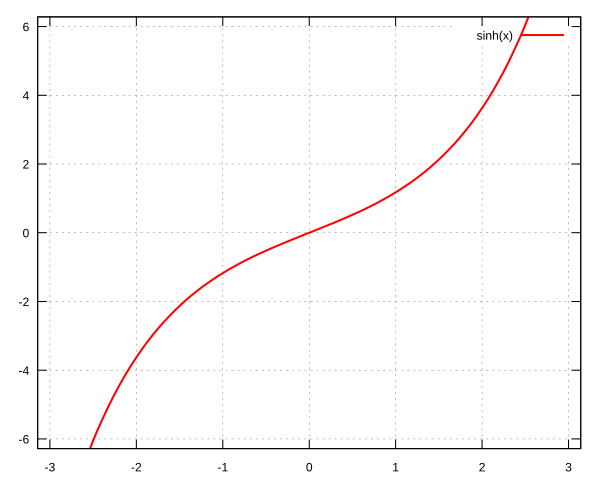
sort
Sort two array in parallel
1sort(A, B);
Parameters:
A(real[int])B(int[int])
Output:
None
A is sorted in ascending order, B is sorted as A.
splitmesh
Split mesh triangles according to a function.
1Th = splitmesh(Th0, f);
Parameters:
Th0(mesh)f(funcorfespacefunction)
Output:
Th(mesh)
sqrt
Square root
1real s = sqrt(a);
Parameter:
a(real)
Output:
s(real)
square
Square of a number.
1real S = square(a);
Parameter:
a(real)
Output:
S(real)
Build a structured square mesh.
1mesh Th = square(nnX, nnY, [[L*x, H*y]], [flags=Flags], [label=Labels], [region=Region]);
Parameters:
nnX(int) Discretization along \(x\)nnY(int) Discretization along \(y\)L(real) [Optional] Length along \(x\)H(real) [Optional] Height along \(y\)flags=(int) [Optional]label=(int[int]) [Optional]region=(int) [Optional]Structured mesh type, see Mesh Generation chapter for more information
Output:
Th(mesh)
storagetotal
1int total = storagetotal();
storageused
1int used = storageused();
strtod
C++ strtod function
1string text = "10.5";
2real number = strtod(text);
Parameter:
text(string)
Output:
number(real)
strtol
C++ strtol function
1string text = "10";
2int number = strtol(text);
3
4int base = 16;
5int number = strtol(text, base);
Parameter:
text(string)base(int) Base [Optional]
Output:
number(int)
swap
Swap values.
1swap(a, b);
Parameters:
a(real)b(real)
Output:
None
system
Execute a system command.
1int Res = system(Command);
Parameter:
Command(string) System command
Output:
Res(int) Value returned by the system command
Note
On Windows, the full path of the command is needed. For example, to execute ls.exe:
1int Res = exec("C:\\cygwin\\bin\\ls.exe");
tan
\(\tan\) function.
1real x = tan(theta);
Parameter:
theta(real)
Output:
x(real)
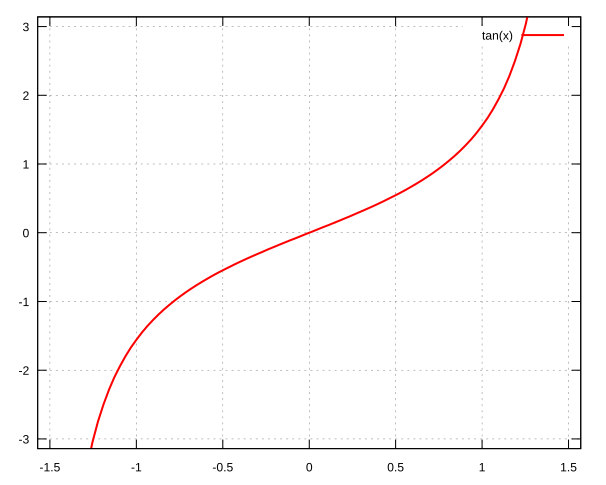
tanh
\(\tanh\) function.
1real x = tanh(theta);
Parameter:
theta(real)
Output:
x(real)

tgamma
Calculate the \(\Gamma\) function of \(x\).
1real tg = tgamma(x);
Parameter:
x(real)
Output:
tg(real)
time
Return the current time (C++ function).
1real t = time();
Parameter:
None
Output:
t(real)
trace
Matrix trace
1real tr = trace([[1, 2], [3, 4]]);
Parameters:
Matrix
Output:
Trace of the matrix (
real)
trunc
Split triangle of a mesh.
1mesh Th = trunc(Th0, R, [split=Split], [label=Label]);
Parameters:
Th0(mesh)R(boolorint) Split triangles whereRis true or different from 0split=(int) [Optional]Level of splitting Default: 1
label=(int) [Optional]Label number of new boundary item Default: 1
Output:
Th(mesh)
y0
Bessel function of second kind, order 0.
1real B = y0(x);
Parameters:
x(real)
Output:
b(real)
y1
Bessel function of second kind, order 1.
1real B = y1(x);
Parameters:
x(real)
Output:
b(real)
yn
Bessel function of second kind, order n.
1real B = yn(n, x);
Parameters:
n(int)x(real)
Output:
b(real)
